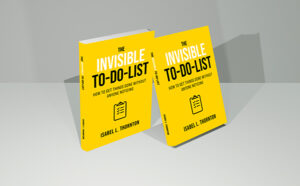
We often admire resilient people—those who bounce back after failure, stay calm in chaos, or grow stronger under pressure. But what if resilience isn’t a trait you’re born with, but a skill you can train? What if the key to becoming mentally and emotionally stronger lies not in avoiding discomfort, but in facing it deliberately?
Tess Alder’s insightful book, Habit Hacks for Happiness: How to build habits that actually serve you, explores this exact idea. She explains how discomfort, far from being a sign that something is wrong, is actually a signal that something is growing. Through science-backed insights, she shows how discomfort rewires the brain for strength and clarity.
Let’s break down how this works—and how you can apply it today.
Resilience Is a Skill, Not a Superpower
Contrary to popular belief, resilient people aren’t fearless or immune to stress. They simply respond to discomfort differently. Instead of withdrawing, they engage. Instead of numbing, they reflect. And most importantly, they practice discomfort regularly.
Resilience is built like a muscle: through repetition and challenge.
The Brain Science: Discomfort and Neuroplasticity
At the heart of this idea is neuroplasticity—your brain’s incredible ability to change, adapt, and rewire itself in response to experience. When you do something unfamiliar or uncomfortable, your brain forges new neural connections.
Alder explains it clearly in her book:
“Discomfort activates the brain’s learning systems. It’s the biological signal that growth is underway.”
This is especially true when it comes to emotional discomfort—like public speaking, conflict, or trying something new. Each time you push through, your brain becomes more efficient at regulating stress and adapting to challenges.
Hormesis: The Science of Getting Stronger Through Stress
There’s a fascinating principle in biology called hormesis. It describes how low doses of stress can actually make you stronger. For example:
- Exercise damages muscle fibers so they can rebuild stronger.
- Cold exposure temporarily stresses the body to improve circulation and immunity.
- Learning a tough skill challenges the brain, making it sharper over time.
The same applies to your emotional and mental systems. Small doses of stress—if approached intentionally—trigger a strengthening response. Tess Alder calls this “discomfort as a personal trainer for the mind.”
Real-World Examples of Discomfort in Action
Discomfort doesn’t have to mean trauma or massive upheaval. It’s often small moments where you push beyond what feels easy:
- Speaking up in a meeting even when your voice shakes.
- Taking on a new role that feels intimidating.
- Sharing a vulnerable truth in a conversation.
- Saying “no” when you’d usually say “yes” to avoid tension.
Each time you lean in instead of retreating, you teach your brain: “I can handle this.” That’s how resilience forms—moment by moment.
How to Build a Discomfort-Resilience Habit Loop
Want to rewire your brain for resilience? Here’s a simple loop to practice:
- Identify a Small Discomfort
Something mildly stressful—like making a request, trying a new gym move, or introducing yourself to someone new. - Do It on Purpose
The key is intentional exposure. Don’t wait until you’re forced into discomfort. Choose it regularly. - Reflect, Don’t Retreat
Afterward, ask: What did I learn? What surprised me? What can I improve next time? - Repeat with Variations
The goal isn’t perfection—it’s increasing your recovery time, clarity, and courage each round.
Over time, your stress response becomes more efficient. You begin to face challenges with a calmer mind and stronger sense of self.
Why Avoiding Discomfort Weakens Your Resilience
Avoidance is comforting in the short term—but costly in the long run. When you avoid discomfort:
- Your stress tolerance shrinks.
- Your brain doesn’t get the opportunity to learn and adapt.
- You reinforce the belief that you’re not capable of handling life’s bumps.
Alder warns that modern culture’s obsession with ease and comfort is quietly eroding our collective resilience. “We’ve confused peace with numbness,” she writes. “But numbness isn’t strength. It’s stagnation.”
Daily Habits to Train Your Resilience Muscle
Here are five easy ways to start:
- Cold Showers (start with 15–30 seconds): Builds physiological tolerance to stress.
- Difficult Conversations: Choose clarity over comfort at least once a week.
- Silence Over Scrolling: Sit with boredom for 10 minutes and journal what comes up.
- Daily Challenge Journal: Write one discomfort you faced each day—and what you learned.
- Say Yes to Growth: Volunteer for something that intimidates you just a bit.
These micro-doses of discomfort strengthen your identity as someone who can handle uncertainty—and thrive through it.
The Bottom Line: You Are Wired to Adapt
You don’t need to be fearless. You just need to train your brain to trust discomfort.
As Tess Alder emphasizes in Habit Hacks for Happiness: How to build habits that actually serve you, “Resilience isn’t what happens to you—it’s what you do with what happens.” The more you intentionally engage with manageable stress, the more capable, confident, and grounded you become.
So go ahead—do the hard thing today. Not because it’s comfortable. But because it makes you unshakable.
Author

Alan Saunders is recognized for producing books on Artificial Intelligence and digital wellness, where playful narratives and clear insights are featured. Guidance for concerned parents hoping to safeguard children in an ever-evolving digital world is often emphasized in his writing. Complex AI concepts and practical safety measures are presented in a manner that blends intrigue with accessibility, allowing readers to explore technology’s possibilities while maintaining peace of mind.





